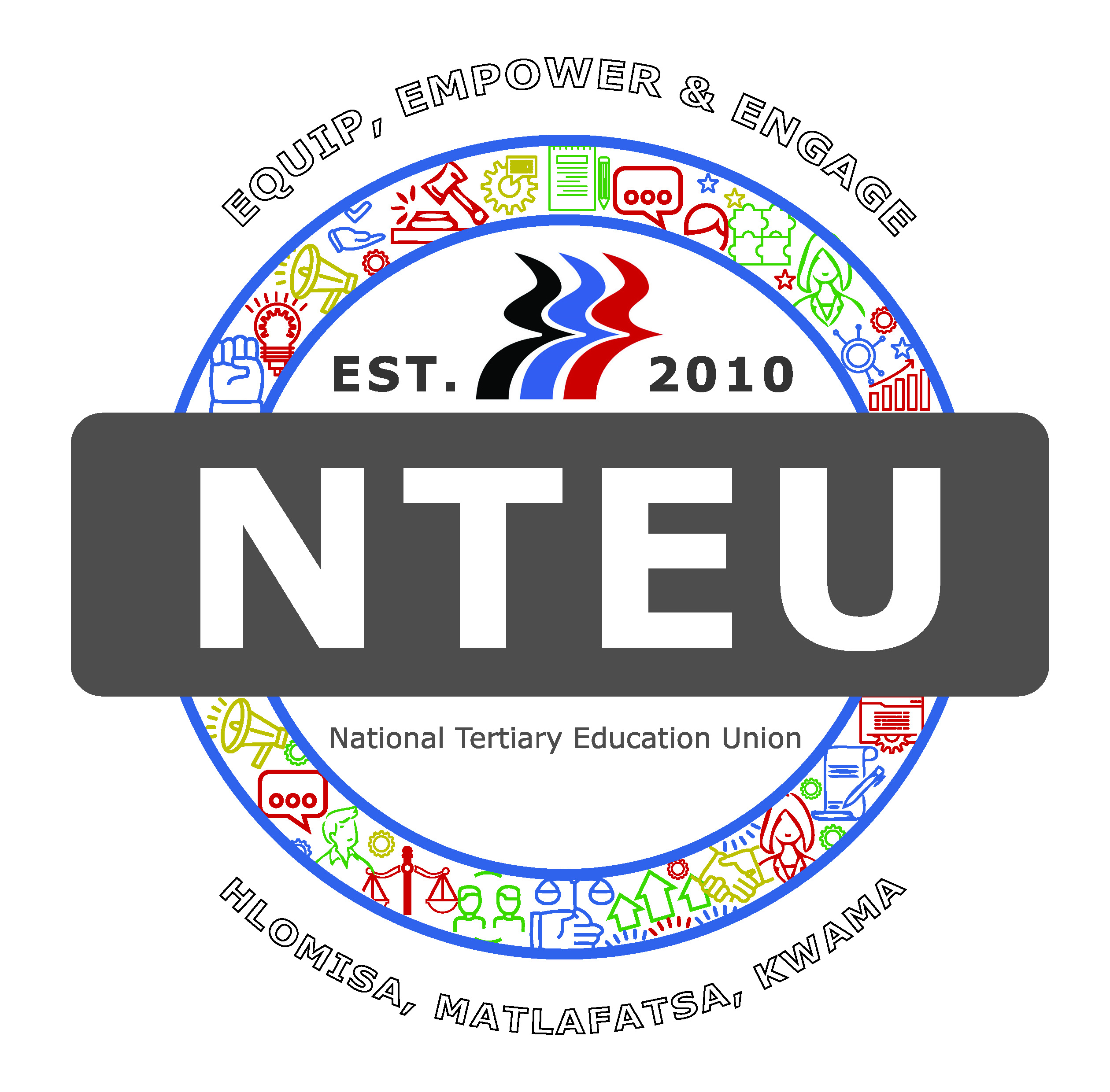Structures
NTEU STRUCTURES
NTEU is organised in two main structural groups, namely national-level structures and branch-level structures. These are further broken down as follows:
At National level, the following structures are in operation. Control of the Union is exercised through the National-level structures in order of precedence.
- National Congress
The National Congress is the ultimate decision-making body of the union. It meets once every two years and has the power to consider all matters submitted to it. Some of its functions are:
- Election of National Office Bearers
- Receive and consider reports from the National Office Bearers
- Receive and consider the report of the General Secretary
- Consider motions or resolutions tabled by member branches or individual members
- Approve the budget and utilisation of accumulated funds
- Determine membership subscriptions
- Review any decisions taken by lower structures on request
- Amend the Constitution
- Do whatever it deems necessary to advance the aims and objections of the Union.
- National Executive Committee (NEC)
The National Office Bearers (as elected by the National Congress) and the General Secretary shall comprise the NEC.
The NEC is empowered to:
- Manage the affairs of the union as mandated by the National Congress
- Consult with the Committee of Branch Chairpersons (CBC) on matters relating to the aims and objectives of the Union
- Attend to any administrative and general business directed to it by the Membership, Branch Committees or, from any other source, either through the NAO or the General Secretary
- Enter lawful agreements in furtherance of the aims, objections and activities of the Union
- Provide support to Branches
- Convene the National Congress
- Committee of Branch Chairpersons (CBC)
The CBC is an advisory body to the NEC comprising of all the elected chairpersons from the various branches of the Union. The CBC is required to meet at least twice per year. It reports to the NEC and has the following powers and functions:
- Consult with the NEC where requested and submit reports, requests and recommendations relating to the aims and objectives of the Union to the NEC
- Assist the NEC with policy and response documents as requested
- Deal with instituting and defending all legal proceedings by or against the Union
- Nominate persons, on request from the NEC, to represent the Union at any negotiations or discussions
At Branch-level the following structures are in operation. Control at branch level is exercised through the branch-level structures in order of precedence:
- Branch Annual General Meeting (AGM)
The AGM is the highest authority at branch level. It has to meet once a year and has the powers to consider all branch-level matters submitted to it. Some of the powers and functions of the AGM are:
- Election of Branch Office Bearers
- Receive and Consider reports of the Branch Office Bearers
- Consider motions tabled by members of the branch
- Approve the branch budget
- Amend the Compulsory Branch Institutional Rules
- Do whatever it deems necessary to advance the aims and objectives of the Union at the branch
- Branch Executive Committees (BEC)
The BEC is elected by the branch AGM and takes up office immediately after being elected. BECs meet at least once a month and have the powers to:
- Attend to organisational tasks and functions of the branch
- Enter into any lawful general co-operative agreements in furtherance of the aims, objectives and activities of the branch and the Union.
- Convene the AGM
- Institute and defend legal actions under the guidance of the NEC through the General Secretary
- Appoint persons to represent the Branch at negotiations, etc.
- Trade Union Representative Council (TURC)
Where a branch membership is more than 300 a committee of Trade Union Representatives (TURC) will be established. Where a TURC has been established, its functions and constituency demarcation shall be directed by the BEC. Elections of TURC members takes place one month after the AGM. The TURC shall meet every second month. The TURC acts as an advisory body to the BEC and make any recommendations it deems fit on behalf of its constituencies to the BEC.
